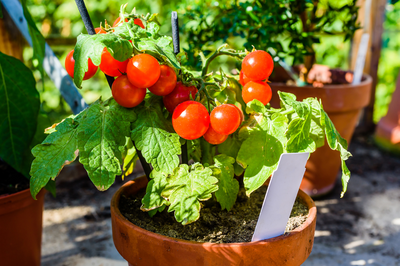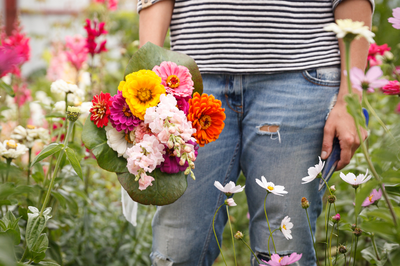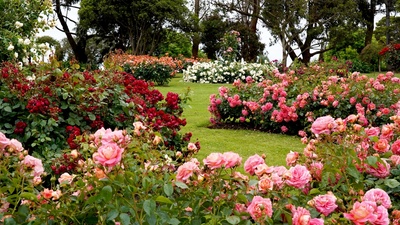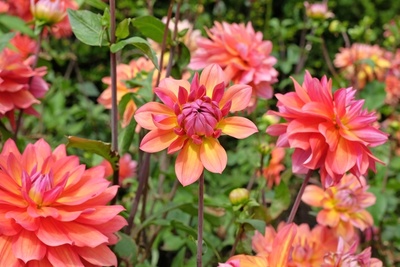
‘In July the sun is hot / Is it shining / No, it’s not!’ As musical comedy duo Flanders and Swann pointed out back in the sixties, the weather in July can be chancy, but nevertheless, it’s a great month for gardeners. The days are long, and you can start to really enjoy the fruits of your labours in the veg patch. To make this year your best harvest ever, here are a few tips on what to do now, as well as how to get the better of plant pests and diseases.
Key jobs for the veg garden in July
- Feed container-grown vegetables such as tomatoes and peppers fortnightly. Use a general purpose liquid feed until the first flowers appear, then switch to a high-potash feed like Tomorite which promotes fruit development.
- Tie cordon tomatoes back to stakes, and pinch out any side shoots that appear where the leafstalks join the main stem. This allows the plants to focus all their energy on producing fruits.
- Start harvesting early potatoes in early July, about 10 weeks from planting. They taste best when eaten fresh, so dig them up as you need them.
- Keep on earthing up maincrop potatoes until there’s a ridge of soil around 30cm high around each plant stem.
- Water container-grown plants daily in hot weather.
- Harvest beans and courgettes regularly to encourage the plants to produce more.
What’s wrong with my plants?
Tomato blight is a common problem in wet weather. Brown rotting patches on fruits and shrivelled leaves are the first signs of blight, and unfortunately, there’s nothing you can do except get rid of affected plants immediately. Tomato blight thrives in warm damp conditions, so good ventilation and careful watering are key to reducing the risk of an attack. Avoid wetting the leaves of your plants when watering.
Powdery mildew can affect squash, courgettes and pumpkins, especially in hot weather. A fungal disease, it appears as a white powdery coating on leaves. Mulch plants and water them regularly to avoid drought stress, and make sure there is enough space between plants for air to circulate. Remove affected leaves as soon as possible.
If your broad beans are plagued by aphids, pinch out the growing tips of the plants once the first pods appear, as this new soft growth is what attracts the aphids. As a bonus, this will also give you bushy plants which produce more beans.
Planning ahead
Sow lettuce, rocket and radish seeds every fortnight, and you’ll be set for salad all through summer. To stop lettuce bolting (producing flowers), sow it where it will be partially shaded by surrounding plants.
If you sowed winter cabbage and leeks in spring, transplant the seedlings to their final positions now.
And if you’ve not planted anything yet, there’s still time. Hurry down to our garden centre, where you’ll find everything you need to start growing your own delicious fruit and vegetables.




